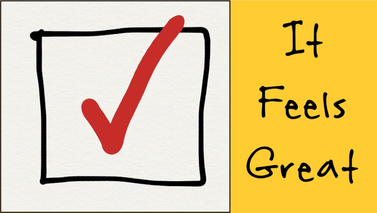|
I have always liked checklists. Putting a checkmark in the box is (almost) better than completing the task itself. If you can relate to that statement, even a little, this may interest you. I have a checklist of all the tasks required by the typical Construction Documents Phase of architectural design services. Inspiration came from Glenn Wiggins' book, A Manual of Construction Documentation, that Fred Stitt uses in the curriculum of the San Francisco Institute of Architecture. Mr. Wiggins breaks the Construction Documents [CDs] down into four phases and shows what should be tackled in each phase in order to minimize re-work and changes. This book is a real gem. However, the 1989 book applies to hand-drafting, so there are tasks that a CAD-user would not encounter, and also tasks that are a bit out of sequence for CAD use. My idea was to move this checklist system from paper format to digital format, and to update it from a hand drafting guide to a CAD guide. The goal was to extend it the Design Development [DD] phase and the Schematic Design [SD] phase with the end result being a customizable series of checklists that would aid in delegating tasks all through the design process. At the same time omissions and rework/changes would be reduced to a minimum. Sadly, I will probably never get to Design Development and Schematic Design. My plan was to work backwards from the Construction Documents version by converting each task found there into its predecessor DD task and delete those tasks without a predecessor. Then repeat for SD. I did get some ideas together about Schematic Design a while back. My new 'Corbu' project is taking up any time that might have been devoted to these checklists. BUT, the CD lists are useable. CD Checklist 1 CD Checklist 2 CD Checklist 3 CD Checklist 4 Here is the reason for four lists. I have renamed the 'phases' of Construction Documents, per Glenn Wiggins' system. I call them 'Steps' to distinguish them from the phases of design services. Each Step is intended to be complete before moving on to the next Step. With rare exceptions, going out of sequence will mean you get to re-work what you have done out of sequence. This is the whole point of the system: doing things in a logical sequence so that you have the minimum of re-work. The Steps also give you good review points for both internal reviews with your design team and external review with your client. Customization Equals Usability - That's right, you probably don't have all these tasks in your typical project. Or, just as likely, you have some that I don't. Customize. Part of the customization process is to think about how you will use these lists. I have used two ways - Excel spreadsheet and Basecamp. In each case you can assign the task to someone, set a deadline, add comments, and track completion. Excel has the benefit of being familiar, but the disadvantage of being harder to manage the spreadsheet. If you share the spreadsheet, inevitably someone else has it open when you want it. If you don't share the spreadsheet, then someone has to do all the updating. Basecamp is perfect for using this type of checklist. Basecamp's one hurdle is getting the tasks into each project. I've thought of two ways to address this. The first way is to use Basecamp Classic because it has a template feature. You will have to type all the tasks into the template, but then you can easily add the template to every project. The second way is to take advantage of Basecamp's ability to create TO-DO lists by email. This works on both versions of Basecamp, the newer one and the classic one. Once you learn how, it's simple, save your checklists as a master and import them through email whenever you have a new project. Here is another idea. Use CarbonFin's Outliner Online. The process of getting the TO-DOs imported is a matter of copying and pasting them from a text file into the browser version of the Outliner. CarbonFin allows sharing of the outline or even posting it publicly. An advantage of both Excel and CarbonFin is the use of a hierarchy or groupings of tasks and sub-tasks. I find this idea of grouping appealing, but the collaboration that Basecamp brings to any process is hard to beat - even without grouping. In any event you have options for how to implement checklists. I will end with the Advantages Of Checklists, just in case you need more incentive to use checklists like this
###
Comments are closed.
|
x
Archives
February 2024
Categories
All
|
Architekwiki | Architect's Resource | Greater Cincinnati
© 2012-2022 Architekwiki
© 2012-2022 Architekwiki








